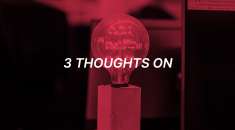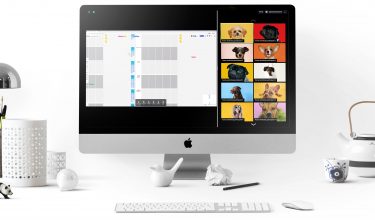
#productmanagment #remote-working #remote
23. Sep 2021 |
- min Lesezeit
We overcame some difficult and some simple challenges in working remotely. The initial changes, such as more video chats, team building remotely over a digital beer, or others, were implemented fairly quickly. After a few weeks, we got the opportunity to facilitate a two-day workshop remotely, and it felt like a real challenge to make it a success. In the following, I would like to share the experience we had after several months of digital workshops.
We also thought a lot about the structure of such a workshop. Usually, we have at least one facilitator per breakout session, which depends a lot on the number of participants. From the experience of the last remote workshops, I would rather keep the groups small by having no more than four participants per facilitator in a breakout session.
Define what you want to accomplish in the workshop and write it down. We’ve changed agendas in the past like others change their underwear. There’s nothing wrong with changing your plan, as long as you always stay results-oriented. It has also helped to prepare a Plan B or even a Plan C in advance.
Speaking of changing agendas: For us, it was very helpful to spread the workshops over several days so that we had some time in between to revise the agenda or methodology if necessary. A good measure here was two to three days with three to four hours each. It also makes the entire workshop easier for the participants to digest since they don’t have to spend 8 hours a day exclusively in front of their laptops interacting with us in the workshop. Both for the participants and for us as facilitators, it is much easier to keep the concentration high.
When the agenda is defined, the methods are chosen and all other obstacles are solved - then it’s time for a cognitive walkthrough of the workshop. We usually have a common thread in each of our workshops: how do the sessions fit together, what information do we need to gather up front to work with in later stages of the workshop. It shocks me even for this obvious metaphor, but think of it like a machine where each cog has to mesh with another.
Since you’re no longer in the same room to share workgroup progress and agree on how to proceed with the planned agenda, it’s difficult to talk briefly with your co-presenters while explaining the next steps or guiding your group through the workshop. With butter there’s a built-in solution - the “facilitators-only” chat channel, but if you’re using other tools like Slack, just create a new channel for that workshop or group chat and off you go.
For most of the workshops, we mainly used Miro and Zoom. We prepared, documented, and handed over everything with these digital whiteboards, as our customers could use these boards as a living document even after the workshop and further elaborate the workshop results. In the meantime, there is an even more holistic solution, especially for workshop facilitation, which is why I would like to give you another tool recommendation.
We started working with Google Jamboards, Figma, Miro in combination with MS Teams, Zoom, Skype, and others. When we continued to work remotely with workshops in this pandemic situation, we mainly used Miro and Zoom in combination, as described above. These two tools work really well together and we still use this combination frequently, although there is now a new solution that I really want to highlight: butter. It kind of feels like they’ve had the same struggles that we’ve had.
It’s basically another tool for video conferencing, but with some features that I think make all the difference.
And there’s much more, such as fun sound effects, built-in polls and quizzes, direct sharing of Youtube videos or PDF files, funny waiting rooms, and the list goes on for a while…
Coming back to my question, if digital workshops can be efficient or not – in my opinion, it’s clear: yes, they can. Currently, we have digitized the most common of our workshop methods and use them quite time-efficiently than analog, because copy/paste can save some preparation time, or this time can be used elsewhere to refine the methods, discuss goals with our customers. In summary, there are definitely some pitfalls with digital workshops and I would really love to do some workshops in person again, but on the other hand, we have gotten so many opportunities to work with clients around the world that probably wouldn’t have happened for us without digital workshops. For me personally, it makes the balance between the two perfect.
In these words - happy collaboration.
